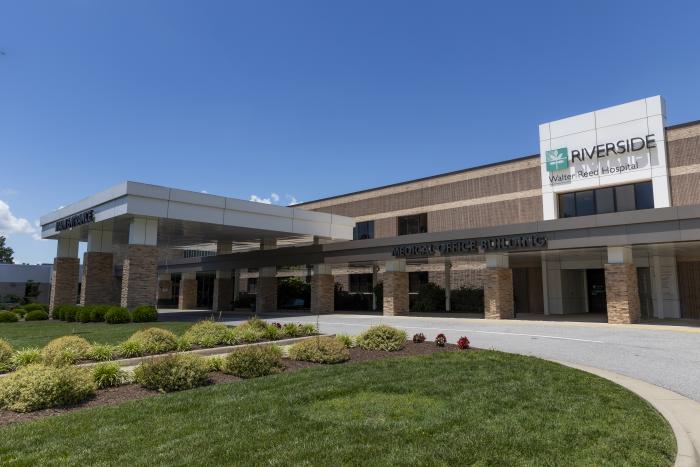Virginia Health System Uses AHRQ Surveys on Patient Safety Culture® To Improve Quality of Care
Riverside Health System, based in Newport News, VA, has been using the AHRQ Surveys on Patient Safety Culture® (SOPS) for nearly a decade, administering surveys annually to all team members. As a result of the data collected from the surveys, changes have been implemented to improve patient safety at Riverside Walter Reed Hospital in Gloucester, VA, including a new tool for handling hospital handoffs. Safety culture survey responses in all categories also improved.
SOPS surveys can be used in hospitals, medical offices, nursing homes, community pharmacies, and ambulatory surgery centers to ask healthcare providers and other staff about their organizational culture’s support for patient safety. Results of the surveys can then be used to improve areas that affect patient safety. SOPS survey questions are related to teamwork, staffing, response to error, communication, and handoffs and information exchange, among others.
Riverside Health System covers 8,000 square miles and has more than 9,500 team members and 750 healthcare providers. The system includes acute care hospitals, medical offices, a college of health sciences, rehabilitation, urgent care, behavioral health, assisted living, skilled nursing, and other facilities. Riverside uses three versions of SOPS: the Medical Office, Nursing Home, and Hospital surveys.

The Riverside system has established a turnkey process to communicate with staff about the survey, encourage participation, and analyze the results. At Riverside Walter Reed Hospital, overall response rates have remained strong, averaging 73 to 77 percent in recent years.
“The surveys on patient safety are part of Riverside’s foundational principles,” said Ashley Hansford, patient safety manager at Riverside Walter Reed Hospital. “We start with commitment and accountability, sharing the outcomes regularly with our Board of Directors. We tell a safety story at the beginning of each meeting to illustrate the impact on patient care. Our budgets allow for safety training and initiatives, and we have accountability at the system level and also at a local level.”
Hansford maintains detailed tracking of SOPS survey results over time, looking at trends and performance at the department level. She then works closely with department leaders to review the data, identify areas for improvement, and develop action plans. This includes providing leaders with pre-packaged presentations to share with their teams.
“I pick the top three areas that a department performed really well in and three areas with opportunity for improvement,” she explained. “Then I make a presentation with all of the talking points for the leaders to go back and present it to their staff, so information is coming from supervisors. They ask their frontline team members what is most important to them. We get more buy-in for making changes because the staff chooses the areas for improvement.”
An important goal for the most recent survey was to assess patient safety culture to improve hospital handoffs, which are critical times to share vital patient information. A handoff is a standardized method to transfer information, authority, and responsibility during transitions in patient care, including nursing shift changes and patient transfers to other hospital units or facilities.
“From the 2023 results, our Med/Surg units picked shift-to-shift handoffs to work on,” Hansford said. “I worked with our nursing team members and leaders to explore ways to improve the handoff. I researched other hospitals’ tools and shared that information with our group. They developed an action plan and decided what they want their handoff tool to look like.”
As a result, the group took the best ideas from all the research and developed a draft paper handoff document they presented to their peers. Since then, the tool has been tested on a trial basis, then enhanced and hardwired into the standard daily work process.
Staff feedback about improvements with the handoff tool included comments such as:
- Consistent delivery and flow of information being handed off.
- Organized information led to efficient handoff times.
- Eliminated duplicate efforts.
- Team members were grateful that they could develop the tools that drive their work.
- Increased empowerment and investment in the outcome.
Hansford believes the value of the SOPS surveys is enhanced with multiple years’ worth of data. “I think it’s really meaningful to look at it year over year, domain by domain. We can see struggle points for some areas and other areas doing really well in those processes. Then we share best practices across our departments in our facilities to make sure good ideas are not siloed,” she explained.
To be sure important safety work continues throughout the year, she meets with staff leaders and requests regular updates on the status of improvement projects. “I also get them to use the SOPS Action Planning Tool from AHRQ to keep everybody moving in the right direction,” Hansford said.
According to Hansford, before Riverside worked on handoffs, the patient safety culture benchmark was 64 percent in 2021. That rose to 76 percent after all the work on handoffs. “While it’s still not perfect, it did make a positive impact. What we’re doing is working,” Hansford said.



